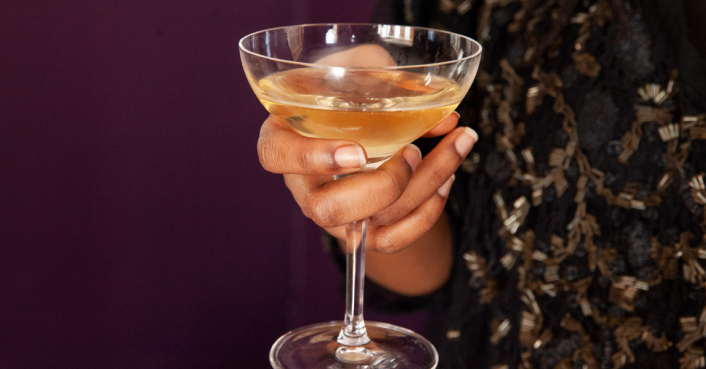Last Updated on May 15, 2023
The damp lifestyle trend has been taking off on TikTok, especially since people are becoming more conscious about their relationship with alcohol.
Though there’s been a huge uptick in people going sober, many are still keen on adopting practices that revolve around balance and flexibility—rather than an all-or-nothing approach. And this is exactly what the damp lifestyle offers.
It ties into various “drink less” movements, such as mindful drinking and sober curiosity, to help people foster healthier drinking habits without going completely “dry.”
According to the CDC, at least 38 million adults in the US drink more than they should. But while de-stressing with (too much) alcohol is becoming common practice, mindful drinking approaches like the damp lifestyle are quickly growing in popularity.
In this article, we’ll explore what the damp lifestyle is all about, including its key features, benefits, and challenges, and how you can get started with this approach to drinking.
What is the Damp Lifestyle?
The damp lifestyle is the choice to practice moderation or mindfulness when drinking alcohol. This is coupled with an intentional focus to avoid binge drinking or going overboard with your alcohol consumption.
The damp lifestyle was originally coined by TikToker Hana Elson and has since turned into one of the latest crazes on that platform. This movement has become especially popular among the millennial and Gen Z age groups due to a shifting focus on healthy and sustainable living.
Because this isn’t your typical black-or-white approach to drinking, you won’t have to bid farewell to alcohol by living damp. There aren’t any predetermined rules you’d have to follow either; the most significant focus of this lifestyle is to drink in moderation while avoiding binge drinking.
How much is too much based on US guidelines?
While there aren’t any specific rules attached to the damp lifestyle movement, there are some clinical definitions that help us understand what moderate drinking and binge drinking mean.
According to the Dietary Guidelines for Americans, moderate drinking refers to having 2 standard drinks or less per day for men and 1 drink or less per day for women in the US. Meanwhile, the CDC defines binge drinking as having 5 or more drinks for men or 4 or more drinks for women on a single occasion (generally a 2-hour timeframe).
How do the latest Canadian guidelines define low-risk drinking?
The meaning of low-risk drinking is different based on Canadian guidelines, which were recently updated in 2023 by the Canadian Centre on Substance Use and Addiction (CCSA).
To minimize any possible harm or effects from alcohol consumption, the CCSA now recommends drinking no more than 2 standard drinks per week. This is a massive drop from the previous 2011 guidelines that limited women to no more than 8 standard drinks per week and men to no more than 14 standard drinks per week.
Essentially, these definitions can help us understand what lower-risk drinking habits look like and also gives us a better idea of what’s considered too much when it comes to living damp.
Start your 15-day trialKey Features of the Damp Lifestyle
Essentially, the damp lifestyle offers a middle-ground approach to drinking, where your drinking patterns would lie between excessive drinking and sobriety.
Living damp gives you that wiggle room to savor a refreshing cocktail or glass of wine from time to time, while reducing the risk of alcohol becoming a coping mechanism or psychological crutch.
Some of the key features of this lifestyle movement include the following:
- Mindfulness: The damp lifestyle encourages you to be aware of how much alcohol you’re consuming and its effects. It involves re-examining why you drink and making decisions that limit the negative impact of alcohol in your daily life.
- Balance: By living damp, you’ll find the balance between enjoying alcohol and avoiding excessive drinking. It’s about recognizing what drinking in moderation really means for you.
- Slow living: Slow living involves taking a slower and more mindful approach to what you do in life. In a culture that drives people to drink and drink, living damp helps you be more intentional with how you spend your leisure time and reflect on whether you really need to drink to find fulfillment.
- Eco-consciousness: Research suggests that limiting alcohol may effectively reduce diet-related emissions and the climate impact of alcohol. And living damp is a great way to cut back on alcohol consumption.
Benefits of a Damp Lifestyle
A damp lifestyle helps you reassess your drinking decisions and create structures or mindset shifts that help you reduce the impact of alcohol on your life.
The following are some core benefits of practicing a damp lifestyle:
Improved physical and mental health
Limiting your alcohol intake reduces the risk of alcohol hangovers and post-drinking headaches or fatigue. In the long run, research shows that low to moderate alcohol drinking is associated with a lower risk of diabetes, stroke, and heart disease.
Some studies also suggest that reducing alcohol intake and drinking moderately may be associated with better overall mood and mental well-being—though total abstinence still shows greater improvements in mental wellness.
More meaningful relationships
Excessive drinking may lead to poor relationship outcomes, increased conflict, and reduced intimacy, according to a 2020 research study. Essentially, living damp can help you avoid unhealthy drinking practices, putting you in a better position to spend time and care for the people you love.
Higher productivity
Ever tried cranking out numbers and charts while completely hungover? A night out of drinking can often make it more challenging to perform well at work the next day. Plus, a 2019 research review found that higher alcohol consumption can lead to poorer work performance and reduced productivity simply because alcohol affects how your brain functions and processes information.
By drinking mindfully, you’re less likely to experience a hangover or feel mentally drained the next day.
Greater flexibility and sustainability
A damp lifestyle gives you more flexibility with how you pursue mindfulness. You won’t have to operate by already-specified rules, and what living damp really does is allow you to explore what works for you in finding that balance.
It’s also not as extreme as going cold turkey, and thus, may be easier to sustain for some people.
Take the 3-min quizPracticing the Damp Lifestyle: How to Get Started
Here are some simple tips that can get you started with adopting a damp lifestyle:
- Reflect on your current drinking habits. Think about why you drink and what triggers that urge to drink. Pinpointing these potential triggers can help you devise effective strategies to avoid or minimize them.
- Create a personalized action plan. Set a realistic drinking limit for yourself. You can decide how many days a week you’re allowed to drink and how many drinks you can have each time. A mindful drinking app like Sunnyside can help you create a personalized weekly plan based on your wellness goals.
- Stay mindful during night-outs and parties. This may look like alternating alcoholic beverages with non-alcoholic ones or going for tipples with lower alcohol content. You can also use a drink-tracking tool (also available on the Sunnyside app) to keep track of the number of beverages you’ve had.
- Make helpful lifestyle changes. For instance, you can pick up a few low-alcohol or non-alcoholic cocktail recipes or avoid environments and restaurants you’re bound to drink at.
There’s no one-size-fits-all method to living damp. With some experimentation, you’ll find what helps you to create sustainable habits.
Damp and Dry(ish) Challenges can Lead to Long-Term Improvements
The flexibility that comes with living damp can lead to long-term habit change and improvements for many people. On the flip side, all-or-nothing challenges often aren’t the best for long-term success.
This is accentuated by the 2023 Dry vs. Damp January Study that analyzed the data collected from over 25,000 participants who took part in the Sunnyside Dry(ish) January Challenge.
Based on the results of this study, a damp or dry(ish) challenge was a lot more accessible for people, as 68% of participants chose to cut back, while 32% chose to go fully dry. And of the participants who decided to go fully dry, only 38% completed the challenge with a 100% success rate, which suggests that going completely dry might not be sustainable for most people.
Both approaches still led to significant benefits, including better sleep and mood, improved productivity, and better dietary and fitness habits.
Around 92% of participants were still eager to maintain a lower intake of alcohol going into February. The study also showed that having access to coaching, drink-tracking tools, and an accountability system proved to be a major advantage. In fact, participants reported that the Sunnyside system and its mindful-drinking tools and motivational reminders were critical to continuing their progress and building healthier drinking habits in the long run.
Essentially, having an accountability system and tracking your drinking can be key to forming long-lasting, mindful-drinking habits and making the damp lifestyle all the more sustainable.
Overcoming the Challenges of a Damp Lifestyle
Despite the possible benefits of living damp, the damp lifestyle might not be suitable for everyone—and that’s completely okay. Some people find that they do better when avoiding alcohol altogether.
That said, any kind of change is difficult, especially positive change. The damp lifestyle will require commitment and perseverance, especially since drinking has become such an ingrained part of our culture.
Living damp could mean learning to enjoy social events without the help of alcohol. Or it could mean letting your ego take the backseat and taking your stand when you experience negativity or peer pressure. Practicing a damp lifestyle may even be viewed as “elitist” or “exclusionary” to a certain extent.
In any case, living damp is a choice you have to make for yourself. You can set yourself up for success by having predetermined drinking limits and actionable plans and connecting with people with similar goals. And, of course, don’t forget to be patient with yourself along the way!
If you’re looking for practical tools and a supportive community to help you along your journey, the Sunnyside mindful drinking platform may be the solution you need. Sunnyside’s structural approach to mindful drinking helps you build healthier habits through personalized weekly plans, drink-tracking tools, progress visualization, and access to real-life coaches.
Most importantly, Sunnyside creates a judgment-free space for you to improve your relationship with alcohol without the pressure to quit! To read more about mindful drinking, check out more content here.
Try a damp lifestyleReferences
[1] CDC VitalSigns – Alcohol Screening and Counseling. (2020, January 31). Centers for Disease Control and Prevention. https://www.cdc.gov/vitalsigns/alcohol-screening-counseling/index.html
[2] Dietary Guidelines for Americans, 2020-2025 and Online Materials | Dietary Guidelines for Americans. (n.d.). https://www.dietaryguidelines.gov/resources/2020-2025-dietary-guidelines-online-materials
[3] Alcohol Questions and Answers | CDC. (n.d.). https://www.cdc.gov/alcohol/faqs.htm
[4] Canada’s Guidance on Alcohol and Health | Canadian Centre on Substance Use and Addiction. (n.d.). https://ccsa.ca/canadas-guidance-alcohol-and-health
[5] Hallström, E., Håkansson, N., Åkesson, A., Wolk, A., & Sonesson, U. (2018). Climate impact of alcohol consumption in Sweden. Journal of Cleaner Production, 201, 287–294. https://doi.org/10.1016/j.jclepro.2018.07.295
[6] Chiva-Blanch, G., & Badimon, L. (2019). Benefits and Risks of Moderate Alcohol Consumption on Cardiovascular Disease: Current Findings and Controversies. Nutrients, 12(1), 108. https://doi.org/10.3390/nu12010108
[7] Yao, X. I., Ni, M. Y., Cheung, F., Wu, J. T., Schooling, C. M., Leung, G. M., & Pang, H. (2019). Change in moderate alcohol consumption and quality of life: evidence from 2 population-based cohorts. Canadian Medical Association Journal, 191(27), E753–E760. https://doi.org/10.1503/cmaj.181583
[8] Woolf-King, S. E., Conroy, A. A., Fritz, K., Johnson, M. O., Hosegood, V., van Rooyen, H., Darbes, L., & McGrath, N. (2019). Alcohol use and relationship quality among South African couples. Substance use & misuse, 54(4), 651–660. https://doi.org/10.1080/10826084.2018.1531428
[9] Thørrisen, M. M., Bonsaksen, T., Hashemi, N., Kjeken, I., van Mechelen, W., & Aas, R. W. (2019). Association between alcohol consumption and impaired work performance (presenteeism): a systematic review. BMJ open, 9(7), e029184. https://doi.org/10.1136/bmjopen-2019-029184




